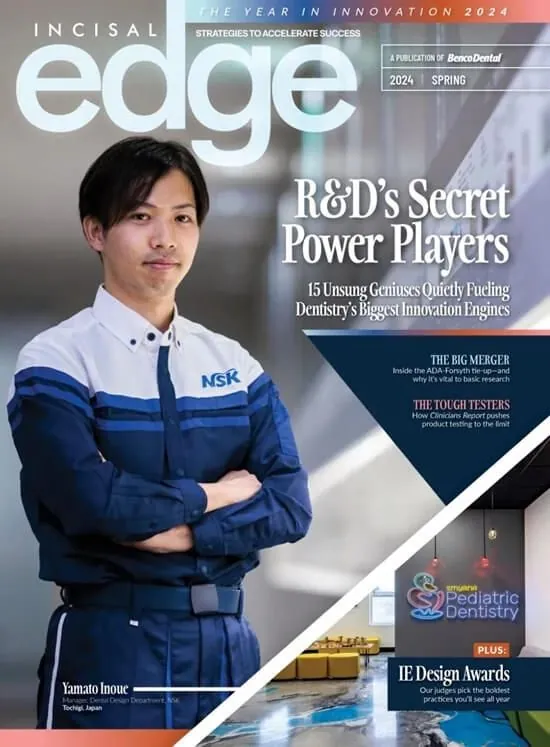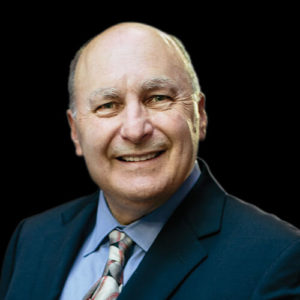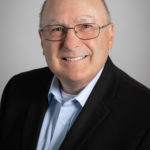Practicing dentistry that’s based on solid evidence is of paramount importance. The ADA’s invaluable online tools will help you do just that.
DO YOU REMEMBER your first experience with evidence-based medicine? I sure do. I was 12 years old, in seventh grade. One day I was certain I had a fever—yet the school nurse said my temperature was 98.6 degrees. I was burning up, but she sent me back to class. “You’re not sick,” she told me.
The 98.6 standard, as well-known as anything in medicine, was established in the mid-1800s by Dr. Carl Wunderlich at Leipzig University in Germany, based on readings from some 25,000 people. That’s a solid data set—but Dr. Philip Mackowiak of the University of Maryland School of Medicine was skeptical. In 1992, he tracked down Wunderlich’s thermometer at the Mütter Museum in Philadelphia. He was startled. It was enormous—a foot long, it took readings over many minutes not orally but via the armpit. Dr. Mackowiak then consulted randomized readings of patients from a 1980s vaccine-development program—a handy control group—and found that just 8 percent of them registered 98.6. In his study, “normal” was 98.2. My own personal normal, it turns out, is around 97. I was feverish that day in seventh grade! Wunderlich’s 98.6 was a relic of the 1850s but hardly the last word in 1992, much less 2018.
For eons, dentistry and medicine alike were reliant on anecdote, stray information and word of mouth. Only in recent decades has evidence-based practice truly become standard. One giant step along that journey came in 1993, when the Cochrane Collaboration (cochrane.org) was founded to establish a network of experts to provide systematic reviews of all relevant randomized controlled health-care trials. It has become my own platinum standard.
Expert consensus is important, but we must always be mindful that scien- tific knowledge is a process with no end. We can never know anything beyond all doubt—but to help dentists and hygienists better understand current guidelines for clinical practice, the American Dental Association in 2007 established its Center for Evidence-Based Dentistry (ebd.ada.org/en/evidence). It offers a wealth of information—and, crucially, a list of previous ADA guidelines now outdated. Think of it as a real-time reposi- tory of the best of dental knowledge.
Likewise the ADA’s collection of systematic reviews (ebd.ada.org/en/ evidence/systematic-reviews). The nonprofit group Creative Commons has devised 10 questions to help determine if such reviews are good clinical appraisals; I cover these 10 queries, and their relation to evidence-based dentistry, in this issue’s Hints From Howard video lesson
Finally, the ADA offers continuing- ed programs on evidence-based dentistry, and I can report from experience that they’re worth your time. The underlying lesson: Dentistry is dynamic, not static.
A speaker at a conference I once attended cited the old saw that “medical knowledge changes 50 percent every 10 years.” Using an evidence-based approach every day in your practice will help you determine which 50 percent of your knowledge can stay, and which— like my school nurse’s concept of “normal” body temperature all those years ago—you probably ought to discard.
HOWARD STRASSLER, DMD is a professor and the director of operative dentistry at the University of Maryland School of Dentistry. He practices in Pikesville, Maryland.
Hints From Howard
Got Any Evidence?
IF YOUR OFFICE DESK is like mine, stacks of dental publications teeter up top. I know the date each magazine and journal was published by where it sits in the pile. They’re similar in that way to rings in a tree trunk.
Keeping up with current industry information, whether via print or online, is highly useful. On the other hand, though, do you know what you’re reading? Is any given article or paper current in its recommended techniques? More importantly, has it been peer-reviewed by someone who brings greater knowledge to the topic than just “I practice dentistry, and this works for me”?
When it comes to treatment decisions, there’s no one true way. The one process that can have a correct answer, of course, is a diagnosis. It might not be readily apparent upon first presentation in some cases, but process of elimination will usually lead a clinician to the pertinent problem.
Once you have a clearly defined diagnosis, it would be nice to have guidelines to help determine the course of treatment. Not all treatment options are equivalent, and various factors can confound when presenting a treatment plan that includes a patient’s medical history, past dental history, wishes, limitations and financial constraints.
To help during both treatment planning and treatment itself, we’re fortunate to occupy ground well beyond our best guess. The profession has never been more devoted to evidence-based dentistry. There isn’t evidence to answer every question, but industry guidelines are increasingly useful. This latest Hints From Howard, covering diagnosis and treatment decisions, will help you find the best available dental evidence—no matter where it stacks up on that pile atop your desk.





